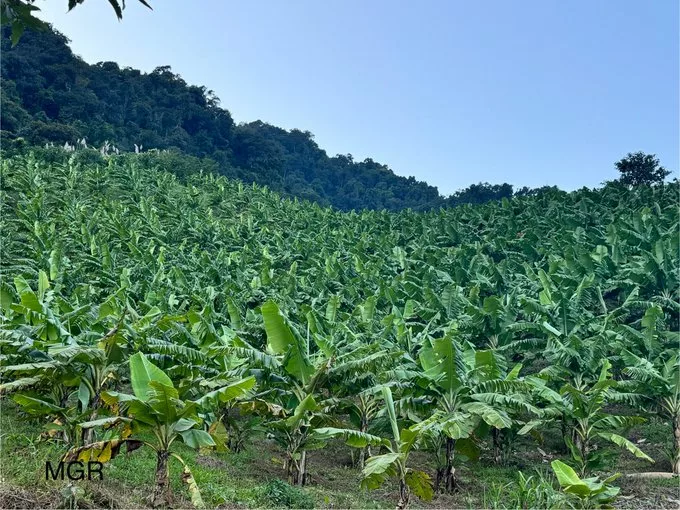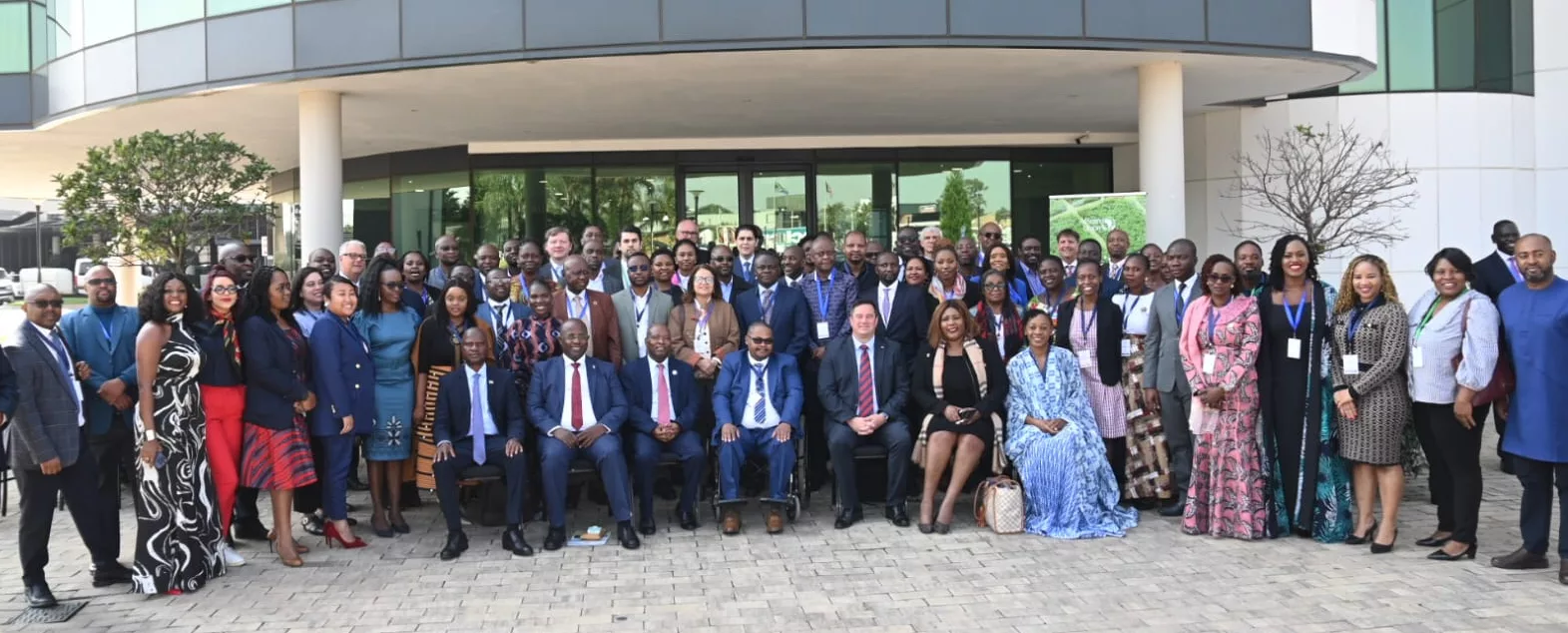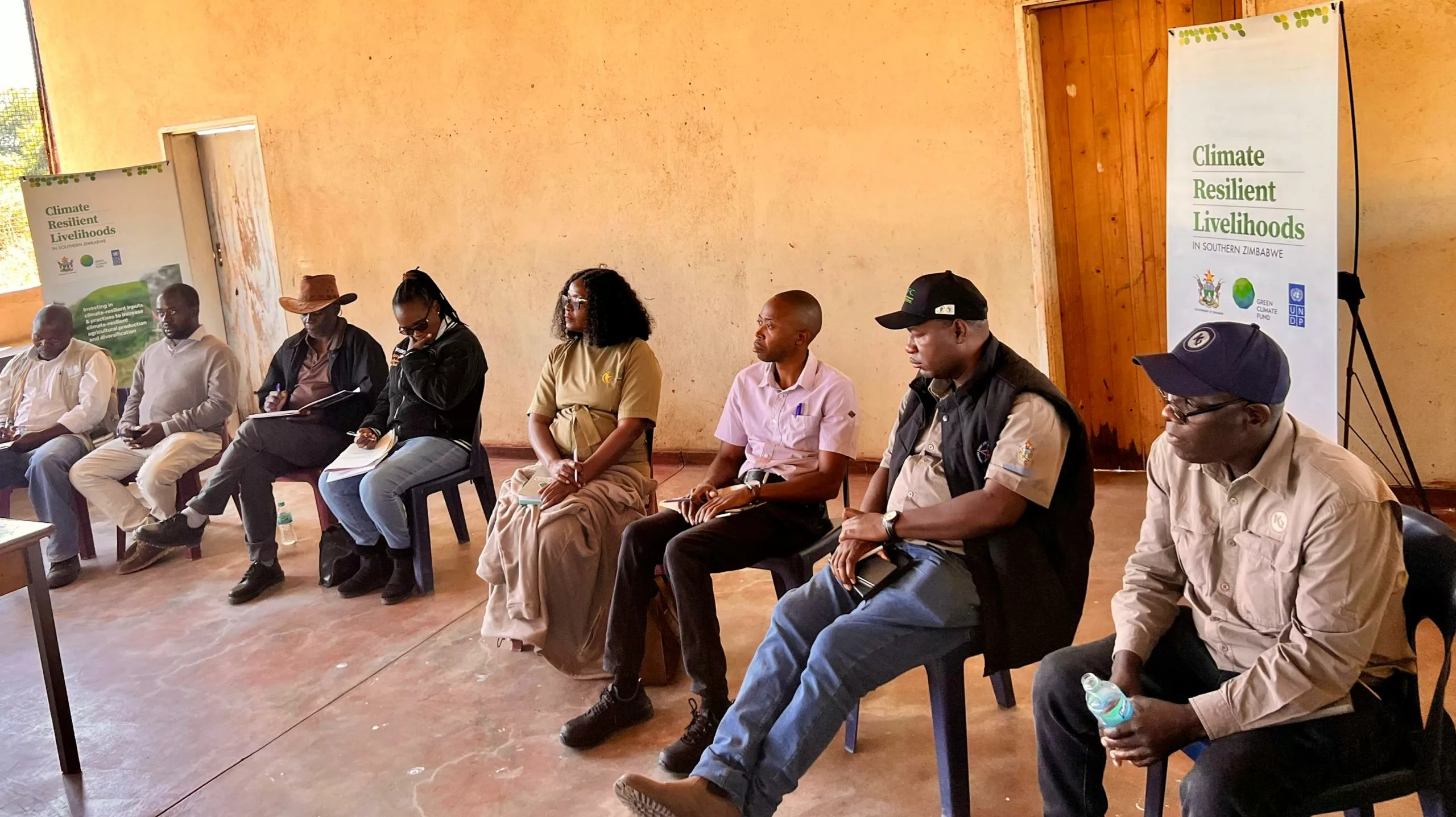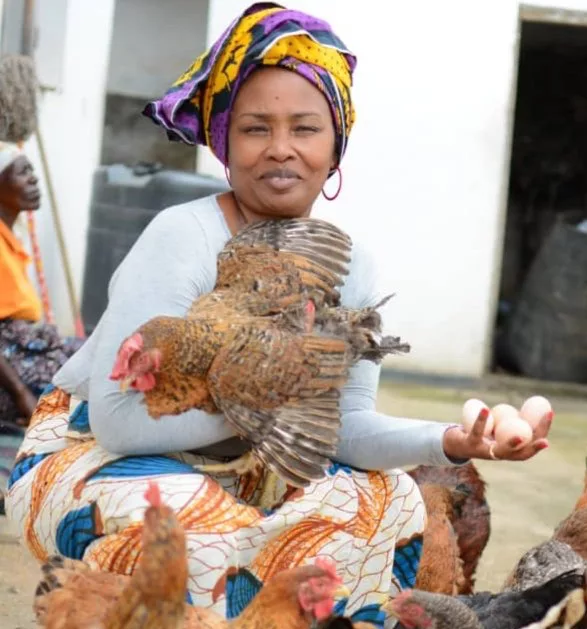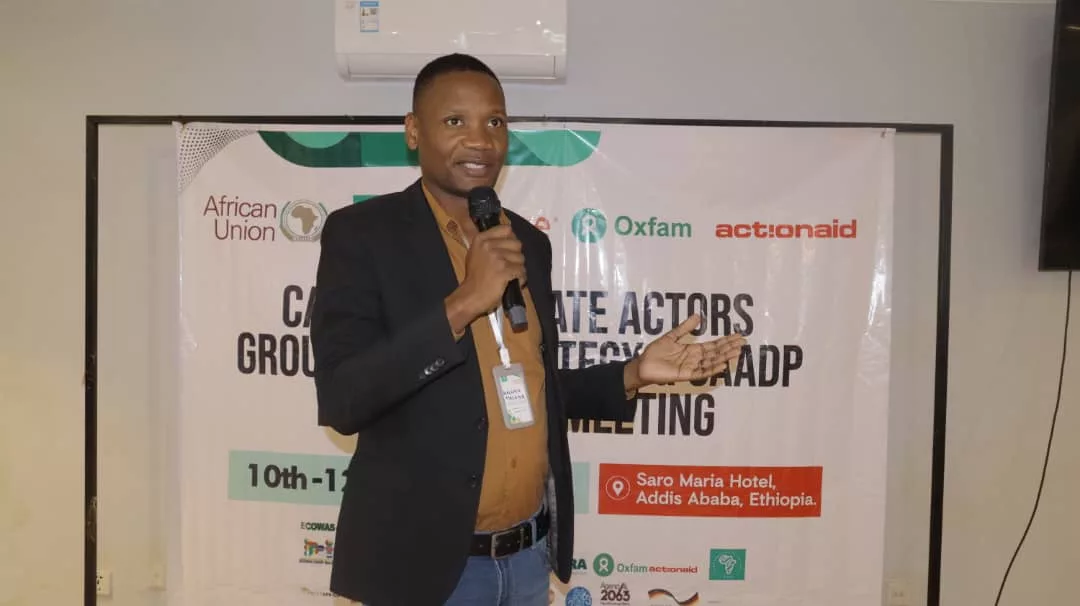|
Getting your Trinity Audio player ready...
|
Writes Dr Mathew M. Abang
Grown in more than 135 countries in the Caribbean, Latin America, Asia, Oceania and Africa, bananas and plantains are staple crops for the food security of some 400 million people. With around 15 percent of global production exported, the total trade value of bananas was about USD 7.5 billion in 2018, making them the largest traded fruit crop in terms of production value.
Banana is an important agricultural commodity in many Southern African Development Community (SADC) countries. Most bananas in the SADC region belong to the Cavendish variety and the major producers are Angola, the Democratic Republic of the Congo (DRC), Madagascar, Mozambique and the United Republic of Tanzania. Angola, DRC, Malawi and Tanzania produce a diversity of cooking and dessert bananas. In Africa, banana yields are 5 to 20 t per hectare per year despite a potential yield of >70 t per hectare per year.
Banana Fusarium Wilt caused by Fusarium oxysporum f. sp. cubense (Foc) is a highly destructive disease of bananas. The latest race of the fungus causing Banana Fusarium Wilt in Cavendish cultivars (and many others) is Foc Tropical Race 4 (Foc TR4), also known as Tropical Race 4 (TR4).
TR4 is recognized as one of the most destructive strains of plant pathogenic fungi in the history of agriculture and the greatest threat to banana and plantain production globally. This variant of the Fusarium wilt fungus differs from other Foc strains found in Africa as it kills the most cultivated banana variety in the world, the Cavendish banana, as well as most varieties affected by other Foc strains on the continent. Presently, there is no way of eliminating Foc TR4, once it’s in the soil. Fungicides and soil fumigants are not efficient in controlling or eradicating it from infested soil. The diversification of crops on plantations through intercropping and other agroecological practices to support sustainability is the key; however, the most effective approach to combat Foc TR4 is the prevention of its spread into noninfested areas and immediate containment when it is detected.
After its first detection in Asia over 40 years ago, and its subsequent spread to Africa in 2013, Foc TR4 arrived in Latin America in 2019 — where some two-thirds of the global banana trade originates. The detection in Mozambique was extremely concerning as this directly threatened a major staple food on the African continent. Only significant efforts to contain the fungus on affected farms, and a natural barrier with almost no banana production in surrounding areas, prevented the fungus from rapidly spreading on the continent. Currently, 23 banana-producing countries globally are known to be affected by Foc TR4.
Three races of Foc are found in the SADC region (Foc races 1, 2 and TR4), which are distinguished by their ability to affect certain banana cultivars. Historical records and recent surveys conducted in SADC countries showed that Foc races 1 and 2 occur widely in the region but cause limited damage, as most African bananas are resistant to these races. Foc TR4, which can attack a wide range of susceptible bananas, is restricted to Mozambique and the Comoros Islands. Weaknesses in implementing phytosanitary measures make African countries, specifically smallholder banana farmers, extremely vulnerable to this race.
Most bananas produced in the SADC region are susceptible to Foc TR4. Cavendish, the most popular banana variety grown in the SADC region, is highly susceptible to Foc TR4. The countries where Cavendish bananas are the main variety grown are Angola, Eswatini, Madagascar, Malawi, Mauritius, South Africa, Zambia and Zimbabwe. Other susceptible dessert bananas grown in Southern Africa include Gros Michel, Silk and Pisang Awak. Cooking bananas such as Bluggoe, Mchare and Matooke, and plantain, are grown in Comoros, the DRC and Tanzania, where they contribute significantly to food security. Of the cooking bananas, Bluggoe and Mchare are susceptible to Foc TR4.
Banana farmers in the SADC region are mainly small and subsistence growers who do not have the means to protect their properties against the introduction of Foc TR4. Although commercial producers, in contrast, have the financial means to implement biosecurity measures, Foc TR4, once introduced, can affect their monoculture plantations severely, with devastating financial consequences. The rapid spread of the fungus at a commercial property in northern Mozambique caused the affected farm to file for insolvency within four years, thereby losing an investment of approximately USD 80 million. The indirect damage caused included loss of government taxes that would have been generated by future sales of fruit, loss of 3,000 jobs, and loss of support for the community in terms of health care and education provided by the banana company. Further spread of Foc TR4 into other parts of Africa, where millions of people depend on banana crops for their livelihoods, could be disastrous, affecting both commercial producers and small and subsistence growers.
The risk of Foc TR4 spreading to several SADC Member States is high. High-risk countries that are most at risk include the Comoros (in-country spread), Eswatini, Malawi, Mozambique (in-country spread), South Africa, Tanzania, Zambia and Zimbabwe. This is due to: their proximity and interaction with northern Mozambique; the movement of people, vehicles, fruit and planting material within and from the Comoros and Mozambique to these countries; the production of banana varieties susceptible to Foc TR4; porous borders between neighbouring countries that are informally crossed; a lack of capacity and resources to intercept, detect and/or diagnose Foc TR4; the importance of banana as a source of food and income in the country; a lack of biosecurity measures at national and farm borders; the presence of large- and small-scale commercial Cavendish banana farms in the country.
Countries at moderate risk of introduction of Foc TR4 include Angola, Madagascar and Mauritius due to: their proximity and interaction with northern Mozambique and the Comoros islands, and the regular movement of people and products between countries and island nations; the importance of banana as staple food crop in Madagascar; the production of susceptible varieties such as Cavendish and Bluggoe bananas in all countries; the exchange of suckers as a means of establishing new banana plantations; the movement of traders between farms without the necessary disinfection; a lack of biosecurity measures at border posts and farm borders.
Countries at low-risk include Botswana, the DRC and the Seychelles due to: the limited production of bananas in Botswana and the Seychelles; plantain and triploid East African Highland bananas that are widely planted in the DRC and that are considered not to be susceptible to Foc TR4, although these bananas still need to be thoroughly tested; little to no contact or trade with Foc TR4-infested countries; no large-scale monoculture production of Cavendish or Gros Michel bananas.
There is no risk of TR4 in Lesotho and Namibia as these countries do not produce bananas.
The development of regional systems and capacities for early detection, accurate identification, sustainable, effective, and coordinated management of TR4 in the 16 SADC countries was supported through the EU-funded project, “Support Towards the Operationalization of the SADC Regional Agricultural Policy (STOSAR)”. Through strategic partnership anchored on the unique strengths and comparative advantages of each partner, FAO, SADC, Stellenbosch University and EU successfully co-created innovative solutions to address the threat posed by TR4 through the following actions.
A regional centre of excellence was established in December 2018 to provide technical guidance on Fusarium wilt. In 2020, a virtual regional Training-of-Trainers workshop was held to assist national plant protection organizations to prevent, contain and manage Foc TR4 effectively. This was followed by the development of a regional strategy to deal with the disease. SADC Member States were supported to develop national contingency plans aligned with the regional strategy. Surveys are being conducted to establish the extent of the spread of Foc TR4 in the SADC region.
To raise awareness of Foc TR4 in Southern Africa, a virtual international conference was jointly organized by Stellenbosch University and FAO in May 2022. The risk of Foc TR4 entering and affecting banana production was assessed in four SADC Member States and risk maps were developed based on the diversity and distribution of banana varieties, possible pathways of pathogen entry, and their proximity to countries affected by Foc TR4. In 2022 Stellenbosch University and FAO conducted in-person training for technical officers from African countries on the prevention, detection and management of Foc TR4. The in-person training resulted in the detection of Foc TR4 in a second SADC country, the Comoros.
Continued funding is required to sustain the momentum of the regionally coordinated fight against TR4. Effective implementation of a multi-component, proactive regional strategy is needed to save banana in Southern Africa from the deadly fungal disease. Key components of such a strategy include the following: a) political will, b) raising of awareness, c) use of clean planting material, d) biosecurity and strengthening of capacity to deal with Fusarium wilt TR4 incursion, e) surveillance, f) research, development and training.
It is crucial that policymakers and community leaders participate in raising awareness among stakeholders at both the national and regional levels to prevent Foc TR4 from being introduced onto banana growers’ farms. Ideally, a declaration of understanding among agricultural authorities from SADC Member States needs to be signed where they commit to carry out concerted actions to prevent the entry of Foc TR4 into countries at risk, such as those neighbouring or having close ties with affected countries.
The first line of defence against Foc TR4 is to be aware of the threat posed by the disease, and how to prevent it from being introduced onto banana farms. This information should be shared with growers, plant protection officials and all other stakeholders in a country’s banana industry, through extension services and through the print and electronic media.
A critical step in the prevention of Foc TR4 and other destructive banana pathogens is the use of clean planting material to establish banana plantations. All banana planting material imported into a country should be moved as in vitro plants, and not as suckers or bits collected from growers’ fields. This is the primary task of a country’s Plant Health authority. If the fungus is already present in a country, the infested fields and region should be placed under quarantine, and the movement of materials from such farms regulated.
Plant health officials from national plant protection organizations (NPPOs), researchers and extension officers need to be trained in field and laboratory diagnosis of Foc TR4, and how to deal with the disease once a suspect case is reported. Biosecurity measures for Foc TR4 should be introduced at the country border, farm border and on-farm level. These measures involve a range of actions, including the listing of Foc TR4 as a quarantine organism, proper inspection services and diagnostic ability, control of farm access, and the use of clean planting materials and phytosanitary measures.
Regular national surveys for Foc TR4 should be undertaken, especially in affected and neighbouring countries. If plants with typical Fusarium wilt symptoms are observed, they should be treated as suspect cases and further investigated.
Research to prevent and manage banana Fusarium wilt is urgently required before Foc TR4 is found in small-grower production systems in the region. This involves rapid and accurate detection systems that employ both in-field and remote diagnostic technologies, the evaluation of popular banana varieties for Foc TR4 resistance and means to manage the disease in small-grower fields. Training of plant health officials, research scientists, extension officers and growers is desperately needed in countries at risk.
Mathew M. Abang (Ph.D., MBA) is the Plant Production and Protection Officer, Food and Agriculture Organization of the United Nations (FAO) – Sub-regional Office for Southern Africa, Harare, Zimbabwe.


